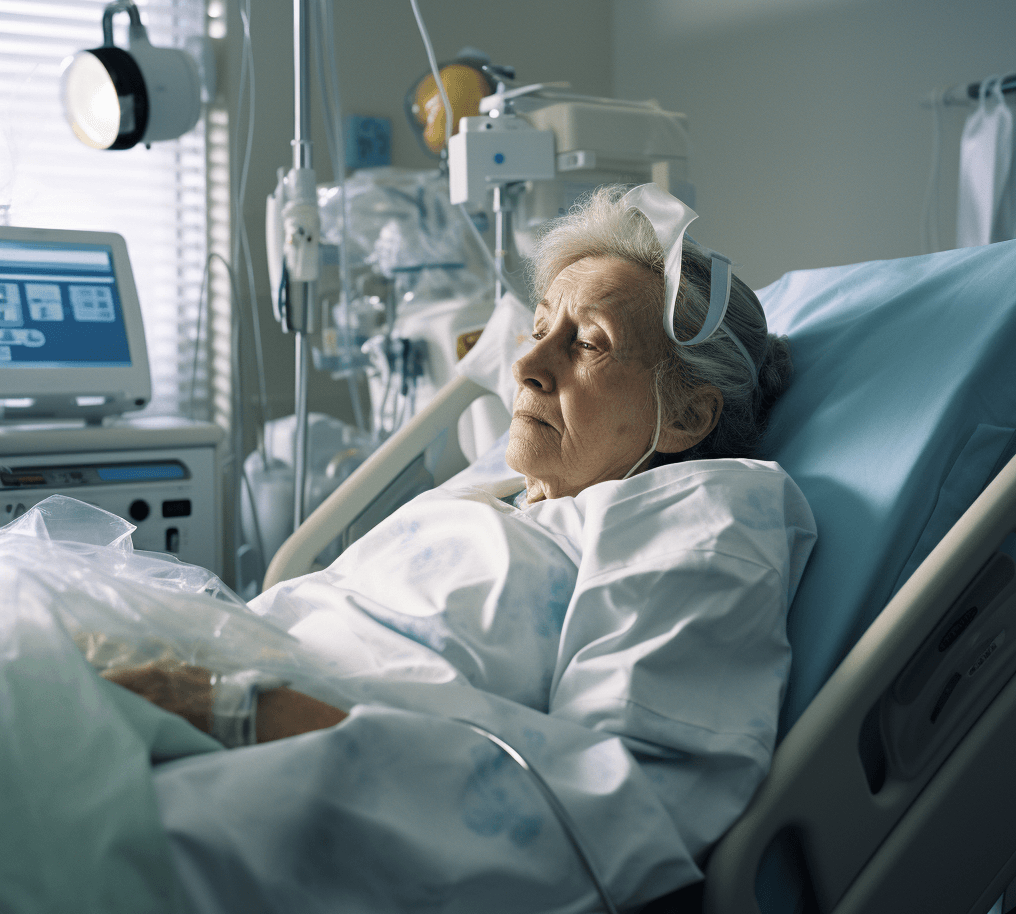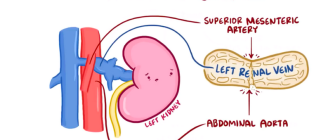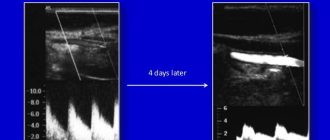
Ensuring Patient Safety and Promoting Recovery Following a Colonoscopy with Biopsy Procedure
A colonoscopy is a medical procedure used to detect changes or abnormalities in the large intestine (colon) and rectum. During a colonoscopy, a long, flexible tube (colonoscope) is inserted into the rectum. A tiny video camera at the tip of the tube allows the doctor to view the inside of the entire colon. If necessary, polyps or other types of abnormal tissue can be removed through the scope during a biopsy.
Safety precautions are an integral part of any medical procedure, and a colonoscopy is no exception. Given the invasive nature of this procedure, it’s critical to understand the potential risks and how to avoid them. The risk of complications can be greatly reduced by following your doctor’s instructions to the letter, both before and after the procedure.
“The patient’s safety is our highest priority, and we take every precaution to ensure a smooth and comfortable recovery.”
After a colonoscopy, especially one in which a biopsy is performed, the recovery process is of utmost importance. The body needs time and care to heal from the procedure and to adjust to any changes made to the colon. This article aims to provide useful information and guidance to promote a safe and speedy recovery after a colonoscopy with biopsy.
Is colonoscopy with biopsy painful?
A colonoscopy is a procedure that enables a gastroenterologist to evaluate the inside of the colon (large intestine or large bowel). While the procedure itself is not usually painful due to the sedatives provided, it can cause discomfort. However, it’s important to note that everyone’s experience with a colonoscopy can be different.
During a colonoscopy, a long, flexible tube (colonoscope) is inserted into the rectum. A tiny video camera at the tip of the tube allows the doctor to view the inside of the entire colon. If necessary, polyps or other types of abnormal tissue can be removed through the scope during a biopsy.
While the procedure itself is typically not painful, patients may feel some cramping or the sensation of having gas afterward. The sedation and pain medicines should keep the patient from feeling any discomfort during the procedure. After the effects of the sedative wear off, the patient may feel bloated or have mild cramping and gas because air was pumped into the colon during the procedure.
Patients are advised to discuss any concerns about pain and discomfort with their doctor before the procedure. It’s also important to follow the doctor’s instructions about rest and recovery afterward.
Understanding the Discomfort
After a colonoscopy with biopsy, it’s not uncommon to experience some discomfort. This can manifest in various ways and it is important to understand what is normal and what may indicate a potential problem.
- Bloating and Gas: During a colonoscopy, air is pumped into the colon to inflate it for better visibility. This can result in bloating and gas after the procedure. While this can be uncomfortable, it is typically harmless and should subside within a day or two.
- Abdominal Pain: Mild abdominal pain or cramping is also common after a colonoscopy. This is usually due to the air that was pumped into the colon and should pass relatively quickly. However, severe or persistent pain could be a sign of a complication, such as a perforation, and should be reported to your doctor immediately.
- Bleeding: Small amounts of bleeding, particularly after a biopsy, are not unusual. However, if you notice heavy bleeding, or if the bleeding continues for more than a day, it’s important to seek medical attention. This could be a sign of a post-polypectomy syndrome or a perforation.
- Change in Bowel Movements: It’s normal to have changes in your bowel movements after a colonoscopy. However, if you experience persistent diarrhea or constipation, or if your stools are black or tarry, this could indicate a problem and should be discussed with your doctor.
While some discomfort after a colonoscopy with biopsy is normal, it’s important to monitor your symptoms and communicate with your healthcare provider if you have any concerns. Remember, your safety and recovery are paramount, and your healthcare team is there to support you.
Pain Management Options
After a colonoscopy with biopsy, it’s normal to experience some discomfort or pain. However, there are several options available for managing this post-procedure pain.
Over-the-counter pain relievers: Non-prescription medications such as acetaminophen (Tylenol) or ibuprofen (Advil, Motrin) can help to reduce pain. However, it’s important to avoid aspirin as it can increase the risk of bleeding after a biopsy.
Prescription medications: In some cases, your doctor may prescribe stronger pain relievers if over-the-counter options are not enough. These medications should be used as directed to avoid potential side effects.
Heat and Cold Therapy: Applying a warm compress or an ice pack to the abdominal area can help to reduce discomfort. Always wrap heat or cold sources in cloth to protect your skin.
Rest and relaxation: Rest is crucial for recovery after a colonoscopy with biopsy. Make sure to get enough sleep and avoid strenuous activities until you’ve fully recovered. Gentle activities such as walking can also help to reduce discomfort.
It’s important to remember that pain should gradually decrease after the procedure. If you experience severe or persistent pain, contact your healthcare provider immediately. This could be a sign of complications such as infection or internal bleeding.
Note: Always consult with your healthcare provider before starting any new pain management regimen after a colonoscopy with biopsy.
Do biopsies hurt after colonoscopy?
Most patients don’t feel anything during a biopsy taken during a colonoscopy. The inside of the colon does not have pain-sensing nerves, so patients typically do not feel any pain during or after the procedure. However, it’s possible to feel cramping or discomfort after a colonoscopy due to the air introduced into the colon during the procedure, not because of the biopsy.
| Common Symptoms When to Seek | Medical Attention |
|---|---|
| Mild abdominal discomfort or bloating | These are normal after a colonoscopy and should resolve within 24 hours. |
| Passing small amounts of blood | This can occur if a biopsy was taken or a polyp was removed. However, if bleeding persists or if there is a large amount of blood, seek medical attention immediately. |
| Mild nausea | This can be a side effect of the anesthesia. If it persists or is accompanied by vomiting, seek medical attention. |
Please consult your doctor about any concerns or unusual symptoms following a colonoscopy and biopsy. It’s important to remember that everyone’s body responds differently to medical procedures and the recovery process may vary among individuals.
Post-Biopsy Discomfort
Discomfort following a colonoscopy with biopsy is a common occurrence and is a normal part of the recovery process. Here is what you should know about it:
- The most common discomfort experienced is bloating and gas due to the air introduced into the colon during the procedure. Walking helps to relieve this discomfort.
- Some people might experience mild cramping or abdominal pain. This usually subsides within 24 hours. Over-the-counter pain medication can be used, but it’s important to avoid those containing aspirin as it can increase bleeding.
- A small amount of bleeding from the rectum is normal, especially if a biopsy was taken or polyps were removed. However, if you notice heavy bleeding or clots, seek medical attention immediately.
- If you have a fever, severe abdominal pain, dizziness or weakness after your colonoscopy, these could be signs of a complication such as a perforation, and you should contact your doctor immediately.
In general, it’s important to rest and take it easy after your colonoscopy. Ensure you stay hydrated and eat a healthy, high-fiber diet to aid your recovery and bowel movement. Always follow your doctor’s post-procedure instructions. If you have any concerns about your recovery, don’t hesitate to reach out to your healthcare provider.
Duration of Post-Biopsy Discomfort
After a colonoscopy with biopsy, it’s common to experience some level of discomfort. The duration of this discomfort varies among individuals and depends on several factors.
Immediate Post-Biopsy Period: The first few hours after the procedure are typically the most uncomfortable. You may experience mild cramping, bloating, or a sensation of fullness. These symptoms are usually a result of the air used during the procedure and should resolve within a few hours.
One to Three Days Post-Biopsy: Any discomfort should significantly decrease one to three days after the biopsy. However, it’s not uncommon to experience mild abdominal discomfort, particularly if several biopsies were taken.
One Week Post-Biopsy: By this time, any discomfort should have completely resolved. If you’re still experiencing pain or discomfort, it’s important to contact your healthcare provider as this could be a sign of a complication, such as an infection or bleeding.
Remember, everyone’s recovery is unique. Factors such as your overall health, the exact nature of the procedure, and how well you follow post-biopsy care instructions can all impact the duration of discomfort. It’s important to listen to your body and communicate openly with your healthcare provider about any concerns.
If you experience severe pain, fever, dizziness, or bleeding, seek immediate medical attention. These could be signs of serious complications.
What are the risks of a colonoscopy biopsy?
A colonoscopy biopsy is generally a safe procedure, but it comes with certain risks that patients should be aware of. Like any invasive procedure, it carries a small risk of infection. The instruments used in the procedure are sterilized, but there is still a slight possibility that bacteria could be introduced into the body.
There is also a risk of bleeding, especially in patients who have a history of bleeding disorders or are taking blood-thinning medication. While the risk is small, it can become a serious complication if it is not controlled promptly.
Perforation, or a tear in the wall of the colon, is another rare but serious risk. This can allow bacteria and digestive fluids to leak into the abdomen and cause serious infection, known as peritonitis. This is a medical emergency that requires immediate treatment.
Some patients may also experience a reaction to the sedative used during the procedure. These reactions can include breathing problems, low blood pressure, and an irregular heart rhythm. However, these side effects are usually temporary and resolve once the medication wears off.
In very rare cases, a colonoscopy biopsy can lead to postpolypectomy syndrome. This is an inflammatory response that can cause fever, pain, and a swollen abdomen.
While these risks can sound alarming, it’s important to remember that they are rare. Your doctor will discuss these risks with you in detail before the procedure, so you can make an informed decision about your care.
Potential Risks and Complications
While colonoscopy with biopsy is generally a safe procedure, like any medical procedure, it has potential risks and complications. Understanding these risks can help you make an informed decision about the procedure and prepare for any unexpected outcomes.
Immediate Risks
Immediate risks may occur during or immediately after the procedure. These include:
| Risks | Description |
|---|---|
| Reaction to Anesthesia | Some patients may have an adverse reaction to the anesthesia used during the procedure, resulting in nausea, vomiting, or allergic reactions. |
| Bleeding | Bleeding can occur at the site of biopsy or polyp removal. It’s usually minor and stops on its own or can be controlled through endoscopy. |
| Perforation | In rare cases, the colonoscope can create a tear in the colon or rectum wall, which may require surgery to repair. |
Delayed Risks
Some complications may not appear immediately and may develop days or weeks after the procedure. These include:
| Risks | Description |
|---|---|
| Infection | Though rare, infection can occur at the biopsy site, especially if the patient has a compromised immune system. |
| Postpolypectomy Syndrome | This is a rare complication that can mimic the signs of a perforation. It occurs when the lining of the colon wall is burned during polyp removal. |
It’s important to note that complications from colonoscopy with biopsy are rare, and the benefits of early detection and prevention of colorectal cancer generally outweigh the potential risks.
Minimizing Risks through Preparation
Preparation is the key to minimizing risks associated with a colonoscopy with biopsy. Your doctor will provide you with specific instructions on how to prepare for the procedure. These instructions are designed to ensure that your colon is as clean as possible, which allows the doctor to clearly see the colon’s lining during the procedure.
Preparation typically involves a special diet and medications. You may be asked to follow a low-fiber diet for a few days before the procedure. The day before the colonoscopy, you may need to consume a liquid diet and take a prescribed laxative to empty your colon. It is important to follow these instructions closely, as any remaining stool in the colon can obstruct the view during the procedure and increase the risk of complications.
Additionally, it is crucial to discuss your medical history with your doctor, including any medications you are currently taking. Some medications, such as blood thinners or diabetes medications, may need to be adjusted before the procedure to minimize the risk of bleeding or other complications.
Finally, arranging for a ride home after the procedure is an important part of preparation. The sedatives used during a colonoscopy can impair your ability to drive or operate machinery for a few hours after the procedure, so having a trusted friend or family member take you home can help ensure your safety.
By diligently following your doctor’s instructions, you can significantly reduce the risks associated with a colonoscopy with biopsy and ensure a safer and smoother recovery.
How long is a colonoscopy with biopsy?
A colonoscopy with biopsy is a medical procedure that allows a doctor to examine the inner lining of your large intestine. It involves the use of a thin, flexible tube called a colonoscope, which is inserted into the rectum and advanced through the colon. If any suspicious areas are found, the doctor can take tissue samples (biopsies) for further testing.
The length of the procedure can vary depending on several factors, including:
- The health of the patient: If the patient has other health conditions that may complicate the procedure, it may take longer.
- The experience of the doctor: Doctors who have performed many colonoscopies may be able to complete the procedure more quickly.
- The complexity of the procedure: If polyps or other abnormal tissue are found and need to be removed, this can add time to the procedure.
On average, a colonoscopy with biopsy takes approximately 30 minutes to an hour. However, patients should be prepared for the possibility of the procedure taking longer in certain circumstances. It is also important to note that patients will need time to recover after the procedure, which could take a few hours.
Patients should discuss the specifics of their procedure with their doctor to get a better understanding of how long it is likely to take.
Duration of the Procedure
The time taken for a colonoscopy with biopsy can vary depending on a number of factors. However, on average, the procedure itself usually takes approximately 30 to 60 minutes.
- Preparation Time: Prior to the procedure, patients need to prepare by cleansing their colon. This process can take one to two days, depending on the specifics of the preparation method prescribed by the doctor.
- Procedure Time: The colonoscopy itself typically takes about 30 to 60 minutes. This can be longer if polyps are discovered and need to be removed or biopsied.
- Recovery Time: After the procedure, patients may require anywhere from 30 minutes to 2 hours to recover from the sedation. It is recommended that patients arrange for someone to drive them home as the sedative’s effects can make it unsafe to drive.
It is important to note that these are general estimates and the exact duration can vary based on individual circumstances and the specifics of the procedure. Always consult your healthcare provider for accurate information.
Factors That Can Affect Procedure Length
Several factors can affect the length of a colonoscopy with biopsy procedure. Understanding these factors can help you better prepare for the procedure and manage your expectations.
Complexity of the Procedure: The complexity of the procedure can significantly affect its duration. If the patient has a history of polyps or a complex anatomy, the procedure may take longer. Similarly, if a biopsy is needed during the procedure, this will also extend its length.
Patient’s Health Condition: The overall health condition of the patient can also affect the length of the procedure. Patients with certain health conditions, such as obesity or lung and heart diseases, may require more time for the procedure. This is often due to the need for extra caution and care during the procedure.
Quality of Bowel Preparation: The quality of bowel preparation can also significantly affect the procedure length. Adequate and effective bowel preparation allows for a quicker and more efficient procedure. On the other hand, poor bowel preparation may result in a longer procedure time because the doctor may need to spend extra time cleaning the bowel before the procedure can proceed.
Remember, every patient and every procedure is unique. The time estimates are just that – estimates. Your doctor will give you a more accurate time based on your specific situation and needs.
What is the recovery time for a colonoscopy with biopsy?
The recovery time from a colonoscopy with biopsy can vary from person to person. Most patients are able to return to their normal routine within 24 to 48 hours after the procedure. However, the results from the biopsy usually take a few days to a week to come back. During this time, it is important to follow all post-procedure instructions provided by the healthcare provider.
Immediately after the procedureRest and recover from the sedation. You will need someone to drive you home as you may still be feeling the effects of the sedation.
| Time Period | Activity |
|---|---|
| 24 hours post-procedure | Most people are able to return to their normal diet and light activities. Avoid strenuous activity and heavy lifting. |
| 48 hours post-procedure | Most people are able to return to their normal activities, including work and exercise. However, some people may still experience some mild discomfort or bloating. |
| 1 week post-procedure | The results of the biopsy are usually available. Your healthcare provider will discuss the results with you and any further treatment if necessary. |
Please note that these are general guidelines and your personal recovery time may be shorter or longer depending on various factors including your overall health, the specifics of the procedure, and how your body reacts to the procedure and sedation.
Immediate Post-Procedure Recovery
After a colonoscopy with biopsy, the immediate recovery period is crucial for ensuring patient safety and preventing complications. The procedure is generally well-tolerated, but due to the sedation used during the process, patients may feel groggy or disoriented immediately after.
Monitoring Vital Signs
Immediately after the procedure, the medical team will closely monitor the patient’s vital signs. This includes blood pressure, heart rate, and oxygen levels. Any significant changes or abnormalities will be addressed promptly to ensure the patient’s safety.
Managing Pain and Discomfort
It’s normal for patients to experience some abdominal discomfort or bloating due to the air introduced into the colon during the procedure. However, severe or persistent pain may indicate a complication such as a perforation or bleeding, and should be reported to the medical team immediately.
Food and Drink
Once the patient is fully awake, they can start drinking clear liquids. As they recover from the sedation, solids can gradually be reintroduced into their diet. It’s important for the patient to stay well-hydrated and nourished during the recovery period.
Observation Period
Patients are typically observed for 1-2 hours after the procedure to ensure that they are recovering well and that there are no immediate complications. This period might extend if the patient’s vital signs are not stable or if complications are suspected.
Following these guidelines can greatly enhance the safety and effectiveness of the immediate recovery process after a colonoscopy with biopsy.
Resuming Normal Activities
After a colonoscopy with biopsy, it’s crucial to gradually resume normal activities to allow the body to properly heal. This table outlines general guidelines for resuming activities, but always follow your doctor’s specific advice.
| Activity Estimated | Time to Resume |
|---|---|
| Driving | 24 hours after the procedure, provided you are not taking any pain medication that may impair your ability to drive. |
| Work | Typically, you can return to work the day after the procedure. However, some people may need an extra day or two, especially if the job is physically demanding. |
| Exercise | Light exercise such as walking can be resumed immediately. However, strenuous activities should be avoided for at least a week. |
| Diet | You can usually return to your normal diet the day after the procedure, unless your doctor advises otherwise. |
Remember, everyone’s body responds differently to medical procedures, including colonoscopy with biopsy. Therefore, it’s important to listen to your body and not rush into normal activities. Contact your doctor if you have any concerns or if you experience any unusual symptoms.
How long does it take for the colon to heal after biopsy?
Recovery time after a colonoscopy and biopsy can vary, but in general, the colon needs about two weeks to fully heal. This period can be shorter or longer depending on several factors including the patient’s overall health, age, and how well they follow post-procedure instructions.
It’s crucial to remember that during the healing period, the biopsy site is still a wound and needs to be treated as such. This often means avoiding certain activities that may strain the colon, such as heavy lifting or strenuous exercise, and eating a diet that’s gentle on the digestive system.
Moreover, it’s important to monitor for signs of complications, such as severe abdominal pain, fever, bloody or black stools, and dizziness. If any of these symptoms occur, it’s essential to seek medical attention immediately.
Finally, the healing process can be accelerated by following your healthcare professional’s advice, taking prescribed medications as directed, getting plenty of rest, and staying hydrated.
Healing Process and Timeline
After a colonoscopy with biopsy, the healing process and timeline can vary from person to person. It largely depends on the individual’s general health, the number of biopsies taken, and the body’s natural healing capability.
Immediately After the Procedure: You might feel groggy due to the anaesthesia. It’s essential to have someone drive you home and rest for the remainder of the day. Mild cramping or bloating is normal due to the air introduced into the colon during the procedure.
First Few Days: You should be able to return to your normal diet and activities within 24 to 48 hours. However, if polyps were removed or a biopsy was taken, you might notice light bleeding from the rectum. This is typically normal, but if it persists, you should consult your doctor immediately.
One to Two Weeks: By this time, the biopsy site should be fully healed. It’s crucial to follow your doctor’s instructions regarding diet and medication during this period. Any discomfort or pain should be completely gone. If you still experience pain, bleeding, or fever, seek medical attention immediately.
Please note that the healing timeline can vary greatly depending on individual factors. Always follow your doctor’s advice and report any unusual or persistent symptoms promptly.
Tips for Supporting Colon Healing
After a colonoscopy with biopsy, it is essential to support your colon’s healing process to ensure a smooth recovery. Here are some tips to help you along the way:
1. Stay Hydrated: Drinking plenty of fluids can help keep your colon hydrated, which is vital for its healing process. Aim for at least eight glasses of water a day.
2. Eat a Healthy Diet: Consuming a diet rich in fiber can help promote colon health. Foods such as fruits, vegetables, and whole grains can aid in the healing process.
3. Avoid Alcohol and Caffeine: Both alcohol and caffeine can dehydrate your body, which can delay the healing process. It’s best to avoid these substances until your colon is fully healed.
4. Limit Physical Activity: While regular exercise is usually beneficial, it’s important to limit strenuous physical activity during the healing process. Light activities, such as walking, can be beneficial, but always consult with your doctor first.
5. Follow Doctor’s Instructions: Your doctor may provide specific instructions for your recovery. Be sure to follow these directions to ensure optimal healing.
Remember, every individual’s healing process is different. So, it’s essential to listen to your body and seek medical advice if you experience any discomfort or unusual symptoms after your procedure.
Question-answer
What is a colonoscopy with biopsy?
A colonoscopy with biopsy is a medical procedure where a long, flexible tube (a colonoscope) is inserted into the rectum to examine the inside of the colon. If any abnormal tissue or polyps are found, they can be removed (biopsied) for closer examination and testing. This procedure is generally used to diagnose colon diseases, including colorectal cancer.
Is there any risk associated with a colonoscopy with biopsy?
While a colonoscopy with biopsy is generally a safe procedure, like any medical procedure, it is not without risks. Complications can include bleeding at the site of biopsy or polyp removal, a reaction to the sedative used during the procedure, or in rare cases, a tear in the colon or rectum wall (perforation). Your healthcare provider will discuss these risks with you before the procedure.
What is the recovery process after a colonoscopy with biopsy?
After a colonoscopy with biopsy, you will be monitored in a recovery room for 1-2 hours while the sedative wears off. Since sedation can impair your reflexes and judgment, you will need someone to drive you home. You may feel bloated or have cramps due to the air pumped into your colon during the procedure, but these should go away with the passing of gas. You may also notice a small amount of blood with your first bowel movement after the procedure. This is typically not cause for concern, but if you experience heavy or continuous bleeding, severe abdominal pain, or fever, you should contact your healthcare provider immediately.
Can I return to my normal diet and activities after the procedure?
Most people can return to their normal diet and activities the day after the procedure. However, if a biopsy was taken or a polyp was removed, your healthcare provider may recommend certain dietary restrictions or activity limitations. Also, you should avoid alcohol, driving, and operating machinery for at least 24 hours after the procedure due to the effects of the sedative.
How long does it take to get the results of the biopsy?
The time it takes to get biopsy results can vary, but generally, you should expect to hear from your healthcare provider within one to two weeks. The removed tissue is sent to a lab where it is examined under a microscope to identify any abnormal cells or signs of disease. Your healthcare provider will discuss the results with you once they are available and will outline any necessary next steps or treatments.
What are the safety precautions one should take after a colonoscopy with biopsy?
After a colonoscopy with biopsy, some safety precautions must be considered for a smooth recovery. These include resting and taking it easy for the rest of the day after the procedure, as you might still be under the effects of the sedative. Avoid operating heavy machinery or driving for at least 24 hours. It’s also recommended to stay hydrated and eat light meals initially. If you experience symptoms such as severe abdominal pain, fever, bloody bowel movements, or dizziness, it’s crucial to seek immediate medical attention.
How long does recovery typically take after a colonoscopy with biopsy?
Recovery time after a colonoscopy with biopsy can vary from person to person, depending on their overall health and how their body reacts to the procedure. However, most people begin to feel better within a few hours and can resume their normal diet by the next day. It’s advisable to avoid strenuous activity for about 24 hours after the procedure. Complete recovery and the return to normal activities typically happen within a couple of days.
Are there any complications to watch out for after a colonoscopy with biopsy?
Yes, while colonoscopy with biopsy is a generally safe procedure, it’s important to be aware of potential complications. These might include bleeding at the site of the biopsy or polyp removal, which usually manifests as blood in the stool. There could also be a reaction to the sedatives used during the procedure, which may cause nausea, vomiting, or breathing problems. A rare but serious complication is a tear in the colon or rectum wall. If you experience any severe abdominal pain, fever, or heavy bleeding, contact your healthcare provider immediately.






